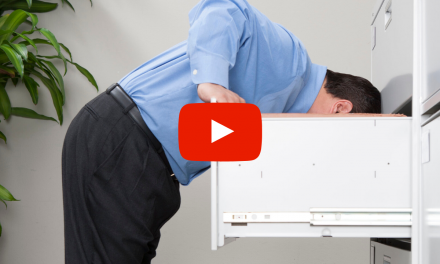
Proving Medical Necessity (Part 2)

According to Medicare, one of the three major issues with chiropractic services is poor documentation, incorrect coding and lack of medical necessity. Medical necessity is an ambiguous concept to prove. With all of the different Medicare carriers, consultants, practice management groups, and experts; confusion abounds when it comes to Medical necessity. To get to the core of how to prove medical necessity in Medicare, one only needs to get to the Local Medicare Policy known as the Local Carrier Determination (LCD).
To prove medical necessity, one sole approach will not suffice. Medicare Medical Necessity is satisfied through several avenues all at the same time. These are as follows:
- An Initial Visit Report
- Initial Examination
- Clear Treatment Goals
- P.A.R.T.
- S.O.A.P.
- O.A.T.S.
Initial Visit Report
An Initial Visit Report (IVR) is required “whether the subluxation is determined by x-ray or examination.” The IVR establishes the history, findings, diagnosis and treatment plan for the case. This establishes the initial need for care, the presence of the subluxation and the cause of the subluxation.
Initial Examination
The Initial Examination confirms the diagnosis, and therefore, the treatment and the prognosis. The examination should comprise of the following:
- Orthopedic tests
- Palpation findings
- Pinprick sensitivity tests
- Reflexes
- Range of Motion – Give plane and degrees so it can be referenced later to show progress. The more specific the degrees, the better. Note pain.
- Muscle strength
- Outcome Questionnaires
PART
When it comes down to it, think of Medicare Chiropractic Coverage as “traditional” chiropractic care. In order to establish Medical Necessity, a subluxation of the spine must be present. This is done through P.A.R.T. Pain, alignment, range of motion and tissue tone changes, such as spasms or edema, proves that the subluxation is present at a certain segmental location. PART must be segmental specific.
Outcome Assessment tests (OATS)
I would propose to you that the purpose of what we do is to improve the patient’s function. When we talk about function, for the most part, we are talking about Activities of Daily Living (ADLs). The objective measurement of ADL deficiency is through OATS.
Assessment
Lastly, the assessment is the area where the doctor gives their professional opinion as to the progress of the case. Keep in mind that I always recommend that you answer the questions “How is the patient improved?” and “Why do they still need care?” for every region you are treating.
Local Carrier Determination
The LCD for Wisconsin Physician Services (WPS – Illinois’ Medicare carrier) lists the definition of medical necessity as the following (I have added in my explanation in the italicized comments):
- The patient must have a significant health problem in the form of a neuromusculoskeletal condition necessitating treatment, and the manipulative services must have a direct therapeutic relationship to the patient’s condition. (Medicare does not pay for pain).When function is significantly impaired, then the patient has demonstrated a significant health problem. Use OATS here.
- You must have a reasonable expectation of recovery or improvement of function. This is conveyed in your treatment goals.
- The patient must have a subluxation of the spine as demonstrated by x-ray or physical exam. A diagnosis of pain is not sufficient for medical necessity. Typically this will be demonstrated by P.A.R.T.
By properly documenting the medical necessity of your care, even upon a denial you have an improved chance of winning an appeal. Investing the time to properly document your care will protect your practice against potential future recoupment demands.
Dr. Fucinari is a Certified Medical Compliance Specialist and a Certified Insurance Consultant. For further information on compliance audits or record reviews, please contact Dr. Fucinari at Doc@Askmario.com Classes are now forming to become a Certified Compliance Specialist (MCS-P). See www.AskMario.com for details.









![Informed Consent [Template Included]](https://ilchiro.org/wp-content/uploads/2014/04/WP-Template-4-440x264.png)








